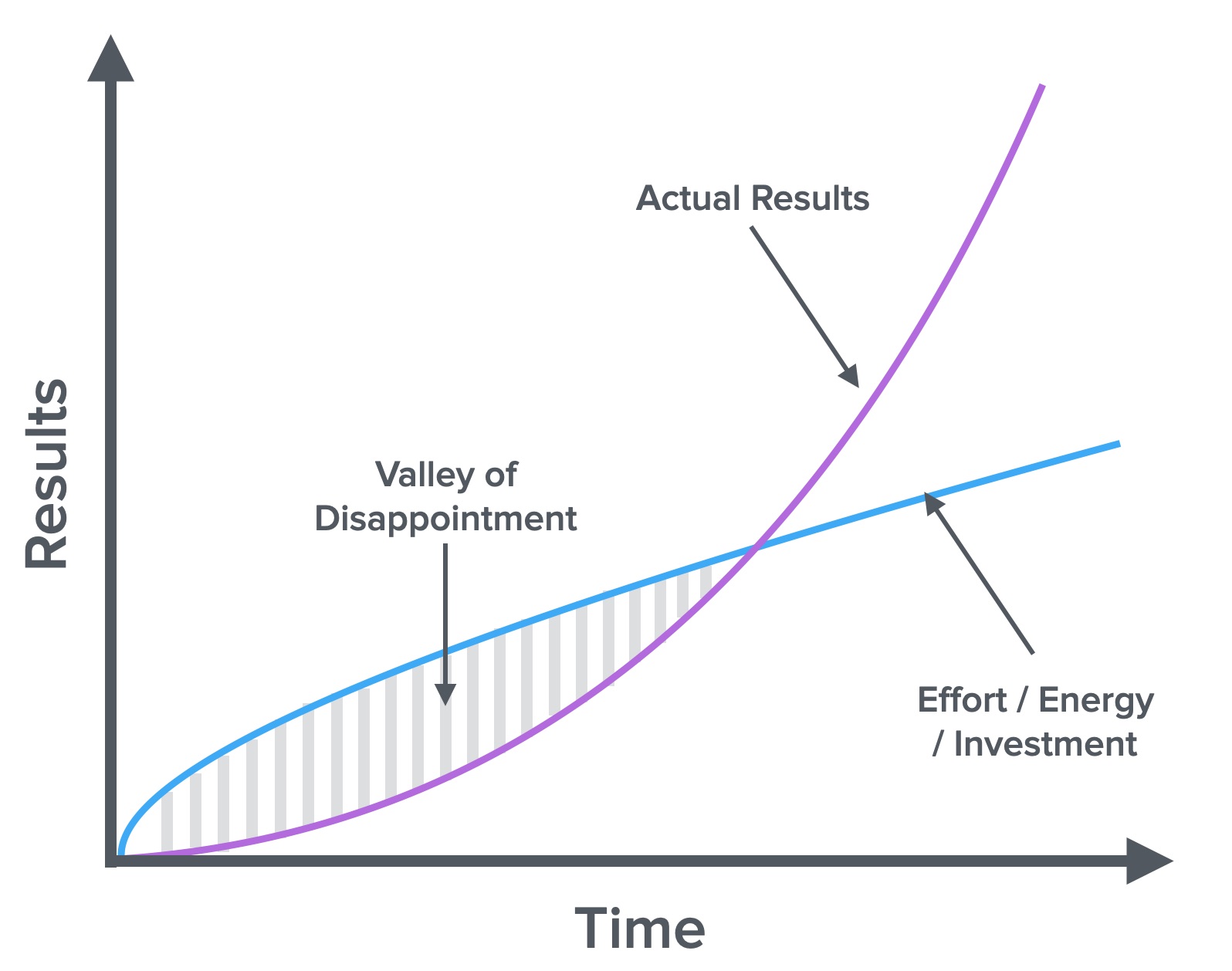5 Reasons You Might Not Want to Use HubSpot
For many years, we’ve been a faithful Hubspot Solutions Partner, working with a wide variety of clients from numerous verticals in both the B2C and B2B space to help them grow revenue and modernize their marketing and sales programs. We’ve attended the annual Inbound Conference nearly every year for the last 6 years, including this years newly redesigned virtual edition. And not only do we execute HubSpot implementations for our clients, we’re avid users of the platform for our own sales and marketing needs. Needless to say, we drank the Koolaide and we’re hooked.
However, with all of this experience, we’ve learned that HubSpot isn’t always the right fit for every case out there. Even though there are a broad range of buying options and product tiers, there are a few things you need to consider before jumping in, and reasons why your HubSpot implementation could potentially fail. Here are a few of the most common instances you should look out for:
1. No resources to execute
The philosophy of Inbound Marketing is sound, and most agree with the potential that it offers growing organizations. Attract a bigger, better audience. Position your company as a thought leader. Nurture contacts throughout their buying journey, improve conversion rates and so much more. The potential is immense for the right kind of business. But if you trek into this with the idea that it’s easy, you might need to rethink that. In addition to your software investment, you’ll need an adequate amount of resources to ensure that your Inbound program is ‘always-on’.
We’ve been asked to audit HubSpot portals many times, and the thing we most often come across is a either a total lack of inputs (content, promotion, outreach etc), or incomplete work. The idea seemed good at the time but the company wasn’t able to dedicate enough resources (usually time) to maintain focus or volume and has since plateaued their results.
Overcoming this
Having a clear plan of attack prior to starting this journey is a must, and knowing that you’re able to realistically dedicate the appropriate time and talent for the long haul is critical. Your journey into Inbound is a long term investment that will pay big yields in the future as long as there is continuous focus applied. Consider working with a Solutions Partner for implementation and ongoing execution if inside resources are stretched too thin.
2. Mismanaged expectations
Let’s be honest. Software is just software, not some special voodoo that will magically conjure up results the minute it’s implemented. It requires a clear strategy and focused energy to make it work.
More often though, businesses may expect results to start pouring in within days or weeks of implementation. After all, a high quality CRM solution isn’t cheap, and you want to see that your investment is paying off in short order. If the needs of the business are that you need results NOW, this might not be the right place to start.
The reality is that most cases we’ve seen when Inbound is newly implemented is that it takes time for results to materialize. But when they do, the growth begins to accumulate exponentially. James Clear outlines this nicely in his book Atomic Habits as the ‘valley of disappointment’. A stretch of time where investment and results are misaligned, … until they’re not.

Even with the correct onboarding, strategy and resources in place, it could take as long as 6 months to see the results you’re seeking. This varies based on the starting state of the company’s contact database, data quality, and existing traffic volume to the website. Work with a professional who can audit your current marketing position and provide some guidance on how to transform existing assets into quick payoffs leveraging new inbound strategies and HubSpot. If you’re a start-up, make sure you have the runway to accumulate assets while you’re in the early days of your inbound investment.
3. No buy-in from sales team
Sales folks are special creatures. They’re the lifeblood of revenue operations, creating opportunity as much as they can and often working at a fever pace. And often, they have their ‘way’ of doing things that work and sometimes aren’t interested in disrupting the status quo, ultimately becoming a roadblock to success.
In this case, they usually come from 2 different camps:
- Experienced Sales CRM Users using a different platform
- Inexperienced non-users relying on spreadsheets, sticky notes and their Outlook contact database.
We’ve heard everything from Sales teams from “If it ain’t broke, don’t fix it”, to “I’ll quit If I’m forced to use a CRM” or even “CRM’s are a waste of my time!”. We get it, sales teams are measured by performance and as long as they deliver, don’t mess with success. If you’re 100% dedicated to letting the sales teams call the shots, its’ not a great investment to try and force feed them some swanky new tech solution.
Overcoming this
Bottom line is that you must have buy-in from users prior to adopting a new system into the business. We’ve been successful in helping sales team buy-in to HubSpot by showcasing the value it represents to them, not just the value to the company they work for. Some key value points include:
- Discover your best quality existing leads based on behavioural insights and AI
- Maintain a continuous view of the leads activity to know exactly when the time is right to engage
- Save oodles of time through templates, documents and automations
- It’s an elegant, easy-to use interface (which lands well with users of clunky overblown Sales tools)
4. Lack of Integration
HubSpot is an ‘all-on-one’ platform (versus all-in-one), meaning that it becomes a centrepiece within the organizations technology stack and integrates neatly with 1000’s of other tech tools. This is great in the sense that you can count on other more specialized tools to perform high value functions in the business with the comfort of knowing that your data is in sync across platforms. For example, an app like CallRail which allows you to capture inbound phone traffic digitally and track conversions is very valuable for local businesses who generate a high volume of phone leads from their website. This allows you to identify with certainty which sources are producing the best results, and dial-in your program for optimal results.
However, from time time we find organizations that are using highly customized, one-off business management platforms and CRM’s that aren’t yet ready for integration with modern platforms like HubSpot. While the software industry has moved largely into the cloud with integration as a core focus, there are still systems that don’t play nice with others.
When considering a software purchase such as HubSpot, it’s important to map out the entire lifecycle of prospect and customer data in the business and identify all of the necessary integration points based on the proposed business and marketing strategy. You may discover a dead-end with an in-house system, or a case where an expensive custom integration needs to be built to connect your core system with your HubSpot implementation. In these cases, speak with your existing software vendors to better understand their roadmap to the cloud and long term plans to modernize as this may set the timetable for your business to jump into the HubSpot platform. Having poor integrations in your data stack will ultimately lead to wasted time and resources, and lack of data quality.
5. Lack of Strategy
Although incredibly valuable, a robust inbound marketing program isn’t ‘easy’ despite the appearances of those who are crushing it and make it look easy. And while HubSpot is billed as an easy-to-use software platform (it is), it’s very deep and sophisticated and has many possible paths forward.
Needless to say, Inbound marketing is very much a choose-your-own-adventure concept that opens innumerable doors. The question becomes, “which doors should be opened?” Successful companies start with a robust, detailed short and long-term strategy and relentlessly execute while optimizing their efforts at every turn. And for this to work, it requires a clear (but agile) game plan with a competent individual or team steering the ship. If you start your HubSpot journey without a clearly defined set of objectives and plans, you could wind up sailing the seas of mediocrity wondering if your investment will ever pay off.
A solid strategy contains clearly defined goals and objectives, usually based on the S.M.A.R.T goal planning methodology, or sometimes based on an OKR (Objective + Key Results) methodology. From there, tactics and initiatives can be identified and matched with a resource plan to ensure proper execution of the plan. And this takes time.
Our advice is to craft your plan prior to making a software purchase, giving you the opportunity to identify all of the tools you’ll need and highlight any trap-doors that might be lurking out there. Work with someone who has a clear understanding of the inbound marketing methodology, modern software systems, and has a solid understanding of your business.
In summary (TL;DR)
HubSpot is a powerful software platform that can help enable your business to achieve its’ goals. To avoid failure, contemplate these questions carefully:
- What is our strategy?
- What are our key goals and objectives, and how soon do we need to achieve them?
- What is our capacity to execute the strategy with our available resources?
- Is my team bought in and willing?
The answers to these questions are a great starting point to evaluating your software needs and will give you the confidence to make the best decision for your business. If you would like to speak with a certified HubSpot solutions partner to explore this for your business, reach out to us for a quick (and free!) exploratory call.
Grow Fearlessly!


